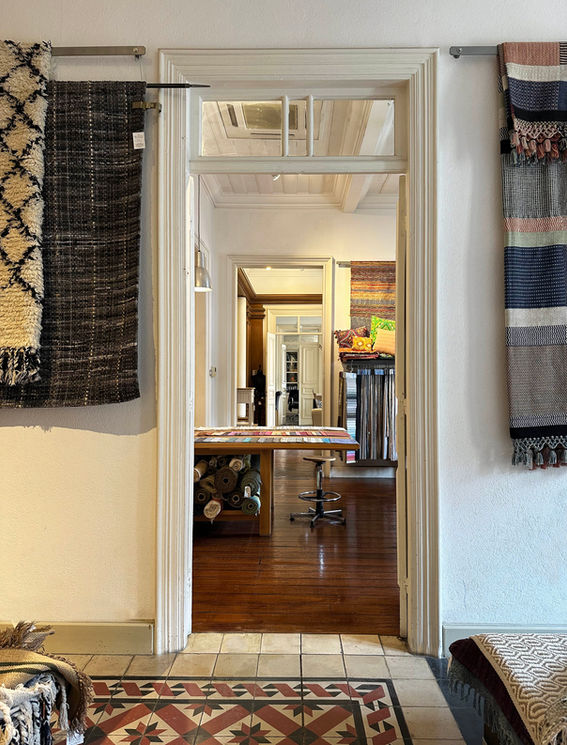Thesis Flagship Showroom
LIMASSOL TOWN CENTRE
COMPLETED 1990
RESTORATION
PHOTO CREDITS - VICTOR HADJIKYRIACOU
Architect Vakis Hadjikyriacou and his interior designer wife Diana Hadjikyriacou first met while studying at the Royal College of Art in London in the early 1980s. After completing their postgraduate studies in Architecture, Interior, and Environmental Design, and gaining valuable experience working for practices such as Norman Foster Architects and Richard Rogers Partnership, the couple made the pivotal decision to return to Cyprus and open their own architectural and interior design studio.
Upon establishing their practice-Vakis Associates-they quickly realised that, after a decade abroad, they needed a fresh approach to connect with local clients. Rather than waiting for commissions to come in, they chose to create a bridge between the public and their design ethos. That bridge took the form of a unique concept: "Thesis" —a design showroom and furniture gallery situated within the same building as the studio.
To bring their vision to life, they found an abandoned merchant building, originally built in 1900, with a commercial ground floor and a residential level above. The building, a listed historic property, was carefully restored by the practice, becoming both their architectural office and the home of Thesis showroom.
What began as a strategic idea to draw walk-in visitors quickly evolved into a creative incubator. Shop customers became studio clients, and studio projects informed the evolving character of the showroom. This fluid exchange between retail and design work created a new kind of visibility and trust.
The ground floor-built from stone and defined by its loft-like proportions and vaulted ceilings-was transformed into a series of gallery spaces showcasing one-of-a-kind furniture, lighting, and objects, many of which were designed in-house by the studio.
The upper residential rooms, restored to their original neoclassical character, provided a domestic context for the furniture collections, demonstrating how the designs could live within intimate, real-life settings.
Modern interventions-including strategically placed internal voids and a sleek steel staircase-were carefully integrated, creating a dialogue between historical preservation and contemporary functionality. The building's Venetian corner façade, a rare architectural relic, was restored with meticulous attention to detail, returning the structure to its rightful dignity.
Over the years, Thesis has grown into a cultural and architectural landmark in Limassol.
It is more than a showroom-it is a living narrative of Cyprus's evolving design identity, an urban intervention, and a quiet manifesto for integrated design practice.








































